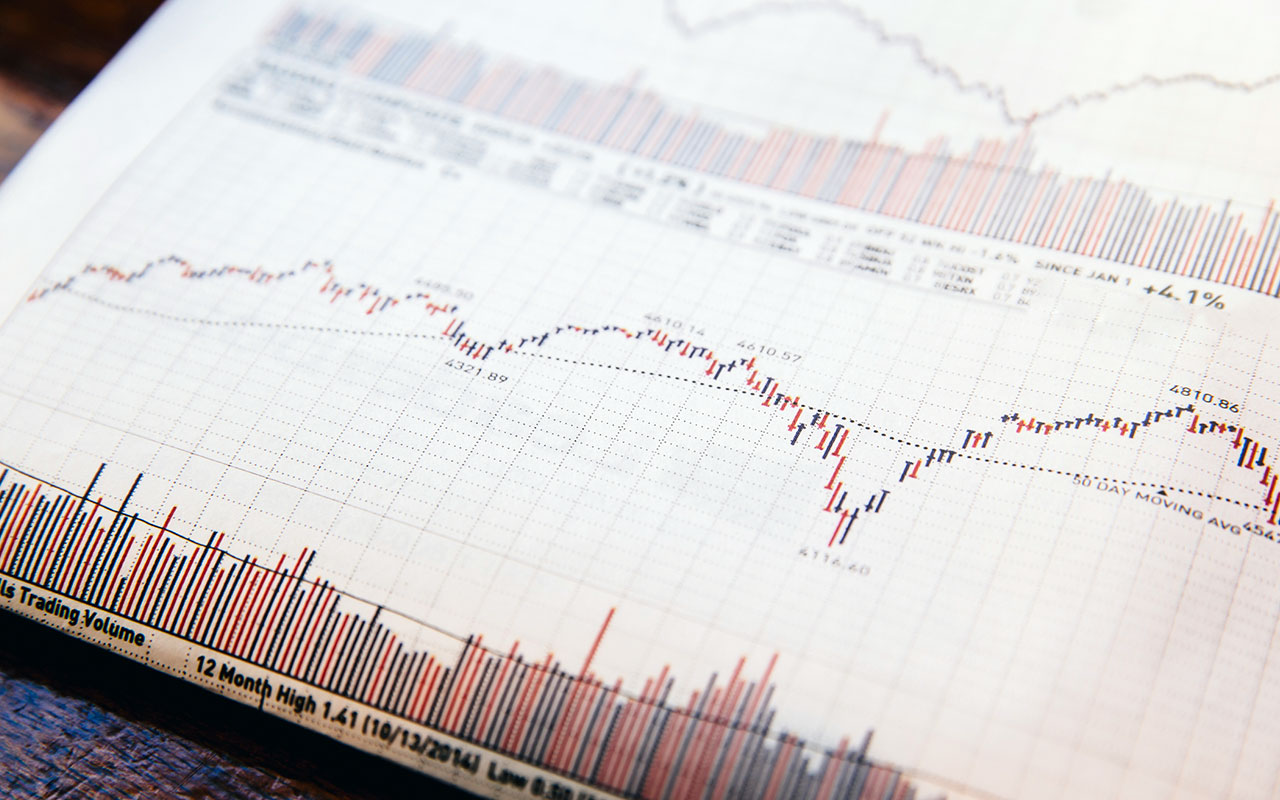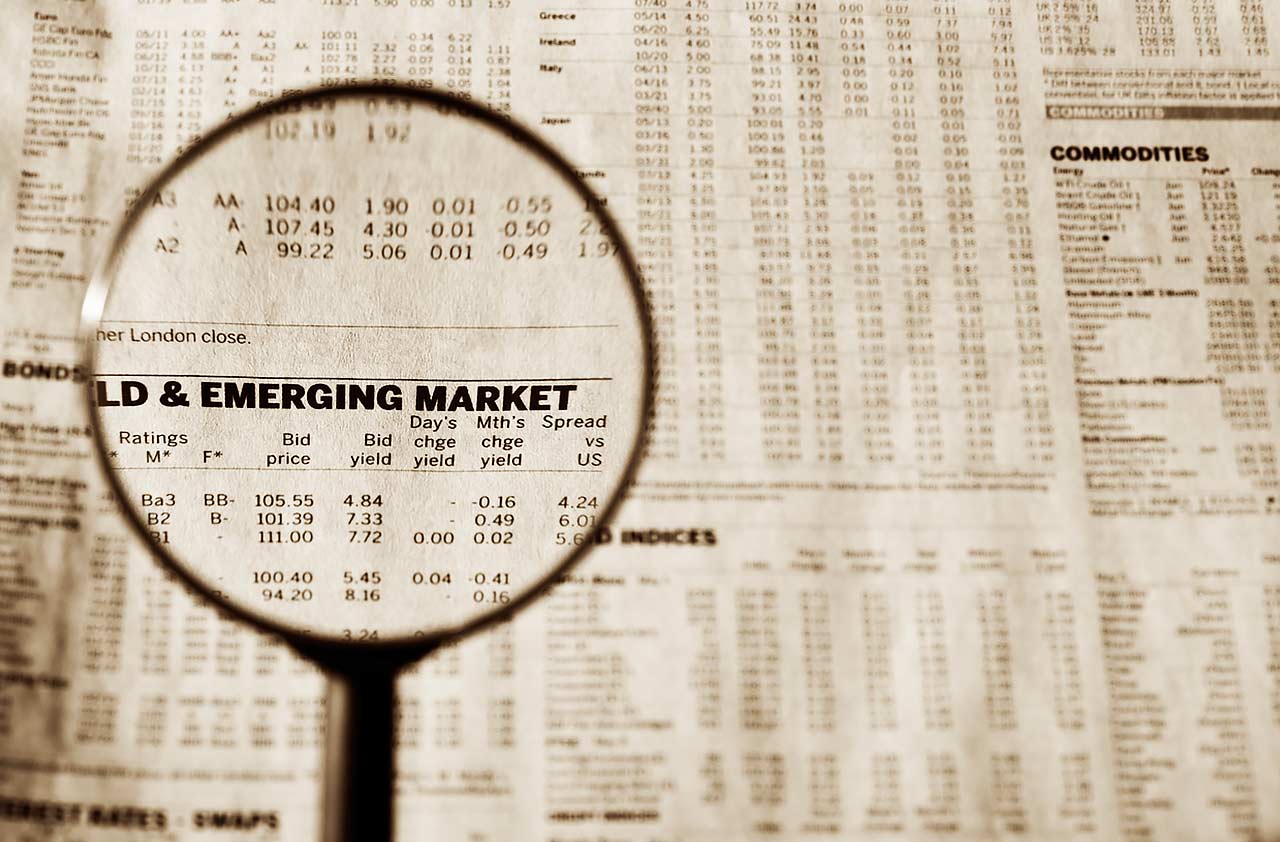20 Expert Market Outlooks for 2019
Wall Street’s analysts and market experts have scores of unique investing ideas and perspectives as we begin the new year.


Wall Street’s analysts and market experts have scores of unique investing ideas and perspectives as we begin the new year. But one common thought across dozens of 2019 market outlooks: Nothing will come easy for investors.
Where will the American stock market go in 2019? What sectors will shine – and which ones will fall to the back of the pack? Will Chinese equities rebound? Will cryptocurrencies find their way back into favored status among aggressive investors?
Experts from across the spectrum – from Wall Street’s most prominent stock-analysis outfits to “boutique” shops that specialize in just one or two corners of the market – have delivered their market outlooks for 2019. Kiplinger’s has published its own insights: our economic outlook and our guide on where to invest for the year. But we suggest also taking in the analyst community’s views on stocks, bonds and beyond.
Digest these key 2019 market outlooks to find investment ideas that fit your portfolio in the new year. They include price targets for the Standard & Poor’s 500-stock index, economic forecasts and various investing strategies.
Disclaimer
Editor’s note: The following are excerpts from market outlooks provided by analysts. Many of these outlooks were provided throughout the month of December, and thus are based on varying market levels at the outlooks’ time of publication. Analysts can and do update their price targets and outlooks as market conditions change. This article is simply a snapshot of different expert views entering the new year.

U.S. GDP: Only Partial Steam Ahead
- Focus: U.S. economy
- Expert: JPMorgan Asset Management
First, we’ll set the stage with JPMorgan Asset Management’s 2019 investment outlook – specifically, its thoughts on U.S. economic growth in the coming year.
“Entering 2019, the U.S. economy looks remarkably healthy, with a recent acceleration in economic growth, unemployment near a 50-year low and inflation still low and steady. (In July 2019), the expansion should enter its 11th year, making this the longest U.S. expansion in over 150 years of recorded economic history. However, a continued soft landing, in the form of a slower but still steady non-inflationary expansion into 2020, will require both luck and prudence from policy makers.”
JPMorgan’s analysts do see real GDP slowing in 2019, for four reasons:
- “First, the fiscal stimulus from tax cuts enacted late last year will begin to fade. …”
- “Second, higher mortgage rates and a lack of pent-up demand should continue to weigh on the very cyclical auto and housing sectors.”
- “Third, under our baseline assumptions, the trade conflict with China worsens entering 2019 with a ratcheting up of tariffs to 25% on USD 200 billion of U.S. goods. Even if the conflict does not escalate further, higher tariffs would likely hurt U.S. consumer spending and the uncertainty surrounding trade could dampen investment spending.”
- “Finally, a lack of workers could increasingly impede economic activity. … With the unemployment rate now well below 4.0%, a lack of available workers may constrain economic activity, particularly in the construction, retail, food services and hospitality industries.”
This theme of caution and prudence peppers many experts’ market outlooks to come.

Slowing (But Still Growing!) Earnings to Propel U.S. Stocks
- Focus: U.S. stocks/S&P 500 target
- Expert: BofA Merrill Lynch
BofA Merrill Lynch, like JPMorgan Asset Management, expects the U.S. economy’s growth to slow and sees a similar fate for American corporate earnings. Nonetheless, their stock-market outlook for 2019 is positive, with an S&P 500 price target that implies double-digit growth ahead.
“The Standard and Poor’s 500 Index is expected to peak at or slightly above 3,000 before settling in at a year-end target of 2,900,” which would be a 15.7% gain for the year based on 2018’s closing readout of 2,506.85.
“Earnings growth also is likely to slow in the U.S., though the near-term outlook remains somewhat positive. We forecast earnings per share (EPS) growth of 5 percent, which would put the S&P 500 EPS at a record high of $170 next year.”
Where will that growth come from?
“Our U.S. equity strategists are overweight health care, technology, utilities, financials and industrials, and underweight consumer discretionary, communication services and real estate.”

Higher Markets, But No Earnings Bonanza
- Focus: U.S. stocks/S&P 500 target
- Expert: Sam Stovall, Chief Investment Strategist, CFRA
CFRA’s Sam Stovall sets a stern tone about the outlook for both 2019 share-price returns and U.S. corporate earnings, though he does set a higher price target for the S&P 500 than BofA Merrill Lynch’s analysts.
After illustrating 2018’s strength in GDP growth and S&P 500 profits, he writes, “Yet to quote the Old Milwaukee beer commercials of years past, ‘It just doesn’t get any better than this.’ Indeed, a tailing off of the trend is the theme for 2019, as global GDP growth, along with S&P 500 EPS, face stiffer comparisons.”
“CFRA’s Investment Policy Committee is lowering its 12-month projected target for the S&P 500 to 2975 from the current 3100, based on the median forecast of IPC members,” Stovall wrote on Dec. 10, implying 13% from the S&P 500’s Dec. 7 close, and 18.7% upside from the end of 2018. “We see few opportunities for economic stimulation as a result of tighter monetary policy and the new congressional make-up. Indeed, history reminds us that the S&P 500 posted a below-average 12-month price gain of 6.2% in the 12 months following the end of rate-tightening cycles in the past 65 years, as compared with the average 8.7% advance for all years.”
CFRA’s outlook for earnings is equally hesitant.
“Lastly, the tax cut’s boost to 2018’s EPS will not be repeated in 2019. At the beginning of 2018, S&P 500 EPS growth was pegged at 11.4%. Today it is a shade below 23%. On 9/30/18, the S&P 500 was projected to record EPS growth of 10% in 2019. Today the estimate is 7.5%. We think the result will be a bit softer at 5%.”

“The End of Easy”
- Focus: U.S. stocks/S&P 500 target
- Expert: Darrell L. Cronk, CFA, President of Wells Fargo Investment Institute
Wells Fargo, in its 2019 outlook titled “The End of Easy,” sets a target range for the S&P 500 Index of 2,860-2,960, implying anywhere between 14.1% and 18.1% upside for 2019. It raises no eyebrows, sitting close to many other major market outlooks.
More notable to investors is the letter to investors from Darrell L. Cronk, CFA, President of Wells Fargo Investment Institute, which concisely presents some of the headwinds that loom ahead.
- “The end of cheap capital: As interest rates rise from generational lows, consumers and businesses will have to rationalize how rising costs of capital affect borrowing and spending decisions.”
- “The end of outsized job gains: Multidecade tight labor conditions put upward pressure on wages, making it difficult for employers to attract and retain needed talent for growth. This, in return, should slow job growth.”
- “The end of extremely low volatility across equities, rates and currencies: One of the hallmarks of this cycle has been the extraordinarily low volatility regimes for most major asset classes. We believe that this began to change in 2018, and we expect this trend to continue throughout 2019.”
Cronk does provide one glimmer of light, however:
“The end of equity returns driven by only a few sectors: Outsized investor performance has come from only a few equity sectors through much of this cycle. We see the range of opportunities broadening, resulting in appealing valuations across a number of equity sectors.”

Will Investors Drive Stocks Back to Super-Premium Prices?
- Focus: U.S. stocks/S&P 500 target
- Expert: Brad McMillan, CFA, CAIA, MAI, CIO of Commonwealth Financial Network
The last broad-market outlook featured here comes from Commonwealth Financial Network’s Brad McMillan, whose 2019 look-ahead includes a nod to stock valuations.
“Despite all the worries about tariffs, strong economic fundamentals have allowed us to sail through the market storms, and this is likely to continue to be the case.”
“With solid fundamentals, the real question will be what stock valuations do. Historically, high levels of confidence have driven valuations higher, which is what we have seen through most of 2018. Recently, however, valuations have dropped to the lower end of the range typical of the past five years or so. As confidence levels moderate and growth slows, we can expect valuations to remain at the lower end of that range.”
“Given projected earnings growth and a resetting of valuations to levels prevailing through the past couple of years – to about 15 times forward earnings – the S&P 500 is likely to end 2019 between 2,900 and 3,000,” implying 15.7% to 19.7% upside. “There is upside potential if valuations recover to the high levels seen recently. But there may be more downside risk, as even a valuation of 15 is quite high historically. Still, this estimate is consistent with revenue and earnings growth projections and with overall economic growth.”

A Global Bear Market Is At Least on the Table
- Focus: Global economy
- Expert: Jeffrey Kleintop, Senior Vice President, Chief Global Investment Strategist, Charles Schwab
Charles Schwab’s Jeffrey Kleintop paints a gloomy picture for the global economy, and international stocks, for the coming year.
“Global growth may slow in 2019 as the economic cycle nears a peak, with increasing drag from worsening financial conditions combining with full employment and rising prices. Global stock markets may peak in 2019 if leading indicators signal the gathering clouds of a global recession.”
“If we borrow the severe weather scale for storms and apply it to the global economy and markets, we aren’t forecasting ‘Recession Warning,’ meaning a recession is here or imminent. A better term is ‘Recession Watch,’ in which conditions are favorable to a recession if a number of risk factors (e.g., trade, interest rates, inflation) deteriorate.
“For all the concerns about trade policy, Brexit and other issues, 2018's big stock market declines generally were driven by inflation and interest rate concerns. These are the indicators investors should watch most closely in 2019. Historically, when unemployment and inflation rates have converged to become the same number – signaling an overheating economy – it has marked the beginning of a prolonged downturn for the stock market, followed about a year later by a recession. The gap between the unemployment rate and the inflation rate is close to one percentage point in major countries like Germany, Japan, the United Kingdom, and the United States.”
A couple tips from Schwab:
- “Consider reducing portfolio volatility by trimming historically more-volatile asset classes, such as emerging market stocks.”
- “Consider rebalancing back to long-term asset allocation targets. Historically, long-term asset class trends have tended to reverse in the year prior to global recessions and bear markets. This may begin to favor international over U.S., value over growth, and large- over small-cap stocks.”

Central Banks Hold the Keys to International Stocks
- Focus: International stocks
- Expert: Kristina Hooper, Chief Global Market Strategist, Invesco, and Arnab Das, Global Market Strategist, EMEA, Invesco
Most diversified portfolios are going to include some allocation to international stocks. Naturally, then, investors should be concerned with more than just S&P 500 targets; Invesco provides its outlook on what could drive international developed- and emerging-markets stock returns in 2019:
“The US Federal Reserve (Fed) is very likely to continue on its path of regular gradual rate hikes. It would probably take a major downturn in economic data or a very severe US stock market correction to divert the Fed from that rate hike path at this juncture.”
“In addition, the European Central Bank (ECB) is due to begin winding down its own quantitative easing program from the end of 2018, which could contribute to further disruption in Eurozone bond markets, which are already experiencing renewed divergence. … In addition, more emerging markets economies are tightening – many doing so to keep up with the Fed – creating an overall environment that is less accommodative.”
“In the Eurozone and Japan, we expect continued support of risk assets because of more accommodative monetary policy, which in our view should result in modest positive stock returns for those regions despite relatively low economic growth. In emerging markets (EM), we expect the Fed‐driven re‐pricing to continue to spill over into global markets through a stronger dollar, higher US bond yields and tighter global financial conditions, pointing to more pressure on EM currencies, putting downward pressure on growth and upward pressure on inflation – a challenging scenario for EM equities, bonds and currencies.”
“However, there is a significant possibility that by mid‐year 2019, the Fed may moderate its normalization as economic growth slows, which should result in some moderation in the investment implications mentioned above, in our view.”

Environment for Emerging Markets May Improve in 2019
- Focus: Emerging-markets stocks
- Expert: BlackRock Investment Institute
BlackRock, in its outlook for emerging-markets equities, makes a somewhat hesitant bull case for the year ahead:
“Emerging market assets have cheapened — offering better compensation for risk in 2019. Country-specific risks — such as a series of EM elections and currency crises in Turkey and Argentina — look to be mostly behind us. China is easing policy to stabilize its economy, marking a sea change from 2018’s clampdown on credit growth. We see the credit impulse turning positive in 2019 and fiscal policy becoming supportive.”
“Other positives for the asset class: The Fed is closer to the end of its tightening cycle and may pause rate hikes and/or balance sheet reduction in 2019. And economies are adjusting: Currency depreciations have led to improved current account balances in many EM economies. The key risk for EM assets: The Fed tightens faster than markets anticipate, renewing the dollar’s uptrend and tightening financial conditions for countries with external liabilities. We are cautiously positive on EM assets for 2019.”
Helen Zhu, Head of China Equities, BlackRock Fundamental Active Equity, said specifically about Chinese stocks: “There’s upside potential for Chinese equities if fiscal and monetary stimulus goes hand in hand with growth-boosting measures such as land reform. Other catalysts are abating trade tensions and a weaker U.S. dollar.”

Investing in China? Don’t Eat the Whole Elephant.
- Focus: Emerging-markets stocks
- Expert: Jay Jacobs, head of research and strategy at Global X
The biggest question investors face in 2019 about dipping a toe into China may not be whether to do so … but how to do so. Jay Jacobs, head of research and strategy at fund provider Global X, says:
“2018 saw the introduction of Chinese A shares into global benchmarks, which has further increased the investable opportunity set in China and its weight in emerging market indices.”
“As the world’s second largest economy, though, we believe that investors need to dig deeper into China and evaluate their exposure on a sector level. If there was anything to be learned from the market’s reaction to tariffs, it’s that China is not a monolith, and that its sectors, like any other major economy’s, do not move in unison.”
“Whether trade risks remain prominent into 2019 or not, China is 10% of the world’s market cap, and investors are have exposure to the nation in some form, either directly or indirectly. It’s important that the exposure investors are getting to China be more nuanced than simply taking a whole-market approach, as we learned this year.”

U.S. Stock Allocations Could Use a Little Trim
- Focus: Investing strategies
- Expert: Sam Stovall, Chief Investment Strategist, CFRA
CFRA provides a general breakdown of how investors should allocate their portfolios in the year ahead, as well as a few more specific recommendations:
“CFRA’s Investment Policy Committee recommends a 55% exposure to global equities” – that’s U.S. and international stocks – “and a 45% weighting to fixed income. We suggest reducing the exposure to U.S. equities to 40% from 45%, while maintaining a neutral 15% exposure to foreign stocks. One reason for the reduction in U.S. equities is that as of 12/7/18, the S&P 500 has recorded an 11.6% CAGR in price over the past 10 years, which is above the average of 5.9% since 1918 and more than one standard deviation above the mean (+11.2%) during this period. Though not a signal of an impending top, this rolling 10-year CAGR implies that the bull may be running out of steam.”
“CFRA thinks that foreign equities offer positive-trending EPS growth, attractive valuations and higher yields. For 2019, while the S&P 500 should see slowing in EPS growth, the reverse is true for foreign markets.” Both the S&P Developed Ex-US BMI (broad market index) and S&P Emerging BMI are expected to post better profit growth in 2019 than in 2018, and “both the developed and emerging market benchmarks are trading at greater than 20% and 35% discounts, respectively, to their average relative P/E (versus the S&P 500) over the past 15 years. Income investors should also remain attracted to overseas markets since they yield more than their domestic counterparts.”
Also, a few notes on sector recommendations. CFRA advises overweights in energy, utilities and information technology, loving the latter for its “above-market 2019 EPS growth expectations combined with more attractive forward relative valuations.” Meanwhile, it has underweights in financials as well as communication services, saying about the latter that it will face “pressure from increased social media regulatory scrutiny along with additional cable subscriber defections.”

Go Large in 2019
- Focus: Stock investing strategies
- Expert: LPL Financial Research
LPL Financial Research’s forecast for 2019 includes GDP growth of between 2.5% and 2.75% in 2019, as well as a total return (stock-price performance plus dividends) of 8% to 10% for the S&P 500 – a less bullish target than many other market outlooks.
Needless to say, in that reality, investors will have to be pickier about where they take their shots. LPL’s thoughts on where investors might find better fortunes:
“LARGE VS. SMALL CAPS: Small caps generated outperformance early in 2018, aided by being relatively more insulated from trade tensions than large caps. However, as trade issues mitigate, the business cycle ages, and the dollar’s uptrend potentially hits resistance, market leadership may shift back toward large caps. In addition, a rising interest rate environment, potentially with tightening financial conditions, may create a challenge for small cap companies that have higher costs of capital and a greater reliance on debt. Accordingly, over the next several months, we suggest suitable investors shift toward target allocations across market capitalization with benchmark-like exposures to small, mid, and large cap stocks.”
“GROWTH VS. VALUE: We maintain our slight preference for value despite its underperformance relative to growth in 2018. We expect value in 2019 to benefit from the pickup in economic growth that began in mid2018, relatively attractive valuations after a sustained period of growth outperformance, and our positive view of financials.”

Sector Investing: How to Stay on the Balance Beam
- Focus: Stock investing strategies
- Expert: JPMorgan Asset Management
The cautious tone JPMorgan set in its outlook for the U.S. economy continues in its view of the investing environment for 2019.
“Investors have recognized that trees do not grow to the sky, and that the robust pace of profit and economic growth seen this year will gradually fade in 2019 as interest rates move higher. While history suggests that there are still attractive returns to be had in the late stages of a bull market, the transition away from quantitative easing and toward quantitative tightening has contributed to broader investor concerns. Many equate this new environment to walking on an investment tightrope without the liquidity safety net that has been present for over a decade.”
“This leaves investors in a tough spot – should they focus on a fundamental story that is softening, or invest with an expectation that multiples will expand as the bull market runs it course? The best answer is probably a little bit of each.”
JPM’s allocation suggestions for the new year: “We are comfortable holding stocks as long as earnings growth is positive, but do not want to be over-exposed given an expectation for higher volatility. As such, higher-income sectors like financials and energy look more attractive than technology and consumer discretionary, and we would lump the new communication services sector in with the latter names, rather than the former. However, given our expectation of still some further interest rate increases, it does not yet seem appropriate to fully rotate into defensive sectors like utilities and consumer staples. Rather, a focus on cyclical value should allow investors to optimize their upside/downside capture as this bull market continues to age.”

Tech Will Shine Again, Defense Is Getting Pricey
- Focus: Stock investing strategies
- Expert: Michael Sheldon, CIO and Executive Director at RDM Financial Group at HighTower
Sheldon sees a shift away from the dynamic seen in the final quarter of 2018, during which technology was battered, and investors huddled into defensive plays such as consumer staples and utility companies.
“We believe that investors need to have some exposure within a diversified portfolio to dynamic faster growing advanced technology companies. Companies that operate in this area of the market are likely to be more volatile than the average company. However, over the next several years, we believe that companies that operate in areas like cloud computing, web services, artificial intelligence, autonomous cars and robotics are likely to generate positive growth and attractive returns.”
“Heading into the new year we favor technology due to strong balance sheets, positive growth characteristics and attractive valuation levels, and healthcare due to a combination of both defensive and growth characteristics along with historically attractive valuation levels.”
“While some defensive areas of the market like utility and consumer staples stocks have performed better recently due to the recent pick up in volatility, these parts of the market are starting to get more expensive and appear unlikely to provide investors with attractive returns looking ahead over the next several years.”

Robotics and AI: The Emerging-Tech Play of 2019?
- Focus: Stock investing strategies
- Expert: William Studebaker, President & CIO of ROBO Global
ROBO Global’s William Studebaker discusses some of the factors in robotics and artificial intelligence (RAII) that could help drive stocks in the technology and industrial sectors this year.
“Massive adoption of AI will transform the healthcare industry. The medical field is seeing the light when it comes to the very real benefits of AI in all things healthcare. Machine learning is already helping physicians make smarter decisions by making it easier to view and analyze patient scans. 3D printing matches medical devices to the exact specifications of patients. Genomic sequencing makes it possible to diagnose and treat diseases earlier than ever, and robot-assisted surgeries are improving surgical outcomes.”
- “Autonomous vehicles will deliver Level 4 autonomy. Level 5 autonomy requires capabilities that work predictably in all environments all of the time. And while that Holy Grail remains beyond our grasp – for now – Level 4 autonomy, which requires that self-driving vehicles work in some places, some of the time, is ready for use in limited situations. The result: autonomous vehicles will begin to appear in a variety of geo-constrained environments such as airports, closed campuses, and retirement communities, laying the groundwork for wider adoption and acceptance as technology get closer and closer to Level 5.”
- “Winners and losers will be defined by how quickly they adopt robotics and AI. Sears and Toys R Us are just the latest examples of companies that were market leaders who failed because they failed to adapt in the new RAAI-driven economy. As robotics and AI continues to march forward, winners and losers in every industry will be increasingly defined by how willing they are to evolve their processes and business models to take advantage of the latest advancements. Those who are unwilling or unable to make the shift will be next on the chopping block.”

A Stormy Year Ahead for Fixed Income
- Focus: Bonds
- Expert: Kathy Jones, Senior Vice President, Chief Fixed Income Strategist, Charles Schwab
Charles Schwab’s Kathy Jones believes interest rates might have hit a ceiling, but that’s not an all-clear for the bond space.
“The worst may be over for the bond bear market. After more than two years of steadily rising bond yields (and falling bond prices, which move inversely to yields), our research suggests that 10-year Treasury bond yields may have peaked for this tightening cycle at the 3.25% level. The Federal Reserve likely will continue to raise short-term interest rates to about 3% in 2019, but we don’t see longer-term yields moving much above the recent highs. Tighter global monetary policy, a strong U.S. dollar and sluggish global growth exacerbated by trade conflicts are likely to weigh on economic growth and inflation, limiting the rise in bond yields.”
“However, the path forward isn’t likely to be smooth. As markets adjust to tightening financial conditions, volatility is likely to increase.”
“We expect the Federal Reserve to raise rates two to three more times, bringing the federal funds target rate to the 2.75% to 3% area in early 2019, short of the Federal Open Market Committee’s 3.4% median estimate for 2020. Because short- and long-term interest rates tend to converge at cycle peaks, the yield curve likely will flatten toward zero. We suggest investors gradually add to average portfolio duration when yields rise.
“As the Fed normalizes rates and reduces its balance sheet, volatility may increase in riskier parts of the fixed income market – such as bank loans, high-yield and emerging-market bonds – due to issuers’ high leverage. We suggest investors move up in credit quality and/or limit exposure to these asset classes. Municipal bonds may post solid performance in 2019, as demand appears strong for tax-exempt income.

Bonds in 2019: Break Out the Ladders
- Focus: Bonds
- Expert: Dan Draper, Managing Director and Global Head of Invesco ETFs
Invesco’s Dan Draper says while pressures are easing, interest rates still could head higher again in 2019.
“The rise of trade tensions between the US and China — and the ensuing tariffs — have softened global growth expectations, and thereby potentially eased, to a degree, the expected upward pressure on interest rates in both the US and Asia. On the other hand, solid US economic growth combined with improved wage growth and low unemployment in the US support the expectation that the Federal Reserve will maintain the gradual pace of short-term interest rate increases through 2019.”
But the global head of Invesco’s ETF division has some advice for this scenario:
“With the overall climate still tilting in the direction of higher rates in 2019, one way to potentially manage that risk is to build bond ladders using defined-maturity bond funds, whether domestic or international. A bond ladder is a portfolio of bonds that mature at staggered intervals across a range of maturities. If rates continue to rise, proceeds from each maturing rung of bonds can be reinvested in longer-dated bonds at higher rates. Defined maturity ETFs can help investors build bond ladders quickly and easily, with a range of bonds that can help provide diversification to a portfolio.
“Another way to help mitigate the impact of currency volatility on fixed income portfolios is to stick with US-dollar-denominated international bond portfolios.”

If Fixed Income Lags, Where Can You Turn for Yield?
- Focus: Income-generating strategies
- Expert: Jay Jacobs, head of research and strategy at Global X
The Federal Reserve’s continued rate hikes for the past couple of years have put pressure on investors in fixed income. While bonds did see some significant relief late in 2018, as a safety play amid the market selloff, Global X’s Jay Jacobs says a return to bond weakness could be at hand.
“The big focus for investors in the back half of the year has been on market volatility that's been seen across asset classes. Although the conventional wisdom would see those investors moving their attention to the fixed income market, we believe that the steady course of rising rates makes traditional fixed income assets unattractive, necessitating alternative methods to generate income.”
“Preferreds offer investors some of that yield, with added potential tax benefits, and we also see an over-sold (master limited partnership, or MLP) market as particularly attractive, especially as the US continues to become a leading producer of oil and natural gas.
“Another attractive area is covered call strategies that can generate income that is tied to volatility, rather than interest rates, giving it little to no duration.”

The Bull Case for Commodities
- Focus: Commodities
- Expert: BofA Merrill Lynch
2018 largely was a down year for commodities. Oil prices made the most noise with their precipitous drop, but gold – despite a year-end revival – finished the year lower, too. However, BofA sees rosier times ahead for several commodities in 2019.
“The outlook for commodities is modestly positive despite a challenging global macro environment. We forecast Brent and WTI crude oil prices to average $70 and $59 per barrel, respectively in 2019.” Respective 2018 year-end prices of $53.80 and $45.41 would imply potential annual gains of 30.1% and 25.2% at those averages.
“Weather-induced volatility is expected in the near term for U.S. natural gas, as cold weather could propel winter natural gas over $5/MMbtu (million British thermal units), yet we remain bearish longer term on strong supply growth.” Natural gas closed 2018 at $2.94 per MMbtu; thus, BofA’s outlook implies gains of as much as 70% for winter natural gas.
“In metals, we remain cautious about copper because of Chinese downside risk. We forecast gold prices will rise to an average of $1,296 per ounce, but could rally to as high as $1,400, driven by U.S. twin deficits and Chinese stimulus.” That target average price of $1,296 is a mere 1% higher than gold’s 2018 close of $1,281.30, but the high-end projection of $1,400 would represent a more substantial 9% gain for the yellow metal.

Gold Drivers to Watch: The Fed, The U.S. Dollar and China
- Focus: Gold
- Expert: Will Rhind, CEO of GraniteShares
While stock prices tanked in the final quarter of 2018, gold prices – and the gold investments tethered to them – enjoyed a renaissance. Gold, which sometimes is thought of as a safe haven against rocky markets, shot up from an October low of roughly $1,185 per ounce to above $1,280 per ounce, and Will Rhind, CEO of GraniteShares, sees more potential tailwinds for the yellow metal in 2019.
“Gold prices may be supported by rising U.S. deficits (and national debt), a struggling U.S. stock market and signs of resurging inflation and resolution of trade frictions. In 2018, gold was impacted by the strength of the U.S. dollar (partly caused by trade frictions), rising U.S. interest rates and low U.S. inflation.”
“Moderate and stable U.S. interest rate increases, in the face of a strong U.S. economy, have acted to help strengthen the U.S. dollar and lower gold prices YTD. To the extent higher interest rates slow U.S. economic growth and help move U.S. stock markets lower, gold prices may increase. In addition, if the Federal Reserve Bank moves to a more accommodative monetary policy in light of slowing growth, gold prices are also likely to rise.”
“Lessening of trade frictions between the US and China, in particular, but also the between the US and the EU, will act to increase demand and weaken the U.S. dollar, which would likely benefit gold.”

Cryptocurrency Investing May Evolve This Year
- Investment Area: Cryptocurrency
- Expert: Eric Ervin, CEO of Blockforce Capital
Blockforce Capital chief Eric Ervin provides an outlook not for the direction of Bitcoin or any other cryptocurrency – but the outlook for investors’ access to this newer asset:
“With every passing year, the probability of a Bitcoin ETF notches higher and higher. In Bitcoin’s 10-year history it’s very likely 2019 will mark the start of Bitcoin ETF trading. With Bitcoin ETFs, we’ll then naturally see other crypto-related ETF offerings emerge.”
Ervin pointed to comments by SEC Chairman Jay Clayton, at CoinDesk Consensus 2018, about things that must be changed for an ETF to be approved. “The prices retail investors are seeing are the prices they should rely on, and free from manipulation - not free from volatility, but free from manipulation,” Clayton said.
Says Ervin, “It is our belief that as more institutions enter the space, there will be more regulation and these valid concerns raised by the SEC will diminish.”
Other things to look for in cryptocurrency investing:
- Crypto-basket apps: “2018 will go down as the year we started seeing one-click options for crypto-basket investing. Casual investors can now invest in a variety of (often market-cap weighted) cryptocurrencies with just one click using well known and respected platforms. We expect the ‘crypto-curious’ market to accelerate in growth during 2019 and the space will need an onramp to investing.”
- Crypto hedge funds: “Despite a market of bears for 2018, there was a huge influx of crypto-related hedge funds, with over 100 funds sprouting up in 2018. 2019 will be the year of weeding out. This will also be due to 2019 being the year of institutional adoption. I expect we’ll see a decrease in the number of a new funds launching and an increase in the number of funds closing. Only the strong survive.”
Get Kiplinger Today newsletter — free
Profit and prosper with the best of Kiplinger's advice on investing, taxes, retirement, personal finance and much more. Delivered daily. Enter your email in the box and click Sign Me Up.
Kyle Woodley is the Editor-in-Chief of WealthUp, a site dedicated to improving the personal finances and financial literacy of people of all ages. He also writes the weekly The Weekend Tea newsletter, which covers both news and analysis about spending, saving, investing, the economy and more.
Kyle was previously the Senior Investing Editor for Kiplinger.com, and the Managing Editor for InvestorPlace.com before that. His work has appeared in several outlets, including Yahoo! Finance, MSN Money, Barchart, The Globe & Mail and the Nasdaq. He also has appeared as a guest on Fox Business Network and Money Radio, among other shows and podcasts, and he has been quoted in several outlets, including MarketWatch, Vice and Univision. He is a proud graduate of The Ohio State University, where he earned a BA in journalism.
You can check out his thoughts on the markets (and more) at @KyleWoodley.
-
 Eight Ways Retirees Can Have Fun Despite Rising Prices
Eight Ways Retirees Can Have Fun Despite Rising PricesHigher prices are a bummer for everyone, but if you're a retiree or on a fixed income, how do you still have a good time without breaking the bank?
-
 IRMAA Could Have Surprised This Retiree: What You Can Learn
IRMAA Could Have Surprised This Retiree: What You Can LearnA financial adviser explains how a client could have unwittingly triggered the Medicare surcharge and what others need to know about it.
-
 The Economic Impact of the US-China Trade War
The Economic Impact of the US-China Trade WarThe Letter The US-China trade war will impact US consumers and business. The decoupling process could be messy.
-
 What to Do With Your Tax Refund: 6 Ways to Bring Growth
What to Do With Your Tax Refund: 6 Ways to Bring GrowthUse your 2024 tax refund to boost short-term or long-term financial goals by putting it in one of these six places.
-
 What DOGE is Doing Now
What DOGE is Doing NowThe Kiplinger Letter As Musk's DOGE pursues its ambitious agenda, uncertainty and legal challenges are mounting — causing frustration for Trump.
-
 A Move Away From Free Trade
A Move Away From Free TradeThe Letter President Trump says long-term gain will be worth short-term pain, but the pain could be significant this year.
-
 Trump’s Whirlwind Month of Crypto Moves
Trump’s Whirlwind Month of Crypto MovesThe Kiplinger Letter The Trump administration wants to strengthen U.S. leadership in the cryptocurrency industry by providing regulatory clarity.
-
 What Does Medicare Not Cover? Eight Things You Should Know
What Does Medicare Not Cover? Eight Things You Should KnowHealthy Living on a Budget Medicare Part A and Part B leave gaps in your healthcare coverage. But Medicare Advantage has problems, too.
-
 12 Great Places to Retire in the Midwest
12 Great Places to Retire in the MidwestPlaces to live Here are our retirement picks in the 12 midwestern states.
-
 10 Cheapest Small Towns to Live In
10 Cheapest Small Towns to Live InThe cheapest small towns might not be for everyone, but their charms can make them the best places to live for plenty of folks.
